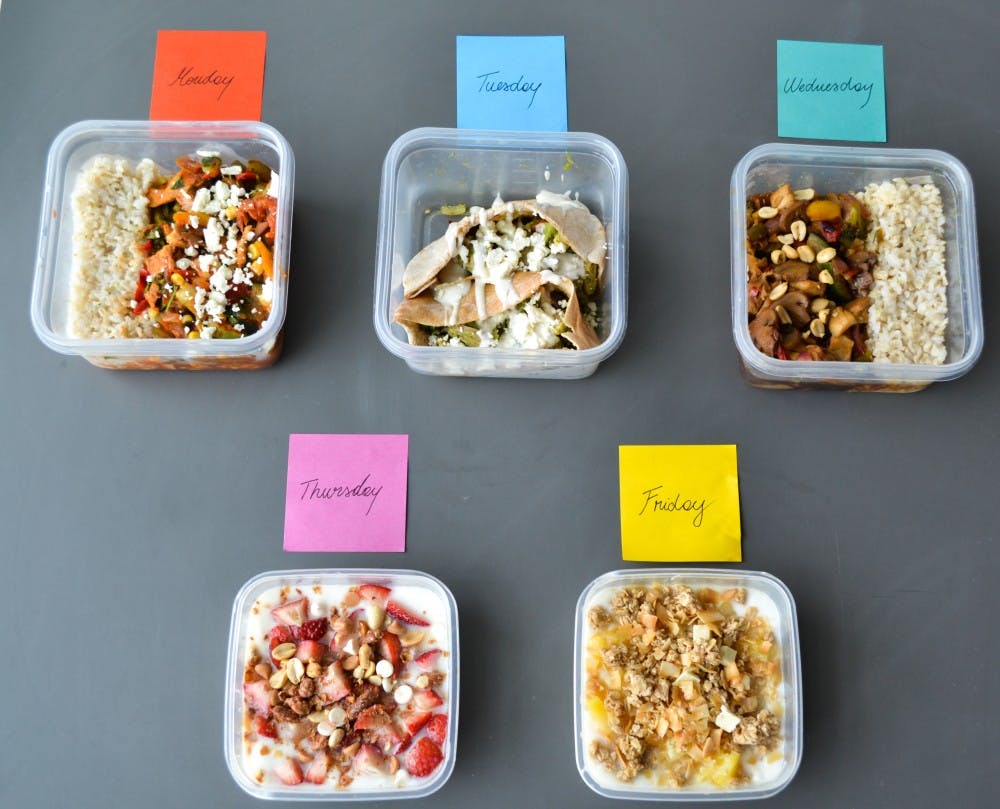There’s something about cooking that’s fascinated me since one memorable day in late middle school, when a burst of overconfidence pushed me to try and recreate a recipe of Asian lemon chicken tenders. In all honesty, I thought I did pretty well—until I tasted my creation, that is. Let’s just say “rocky” became the signifier for my budding relationship with cooking.
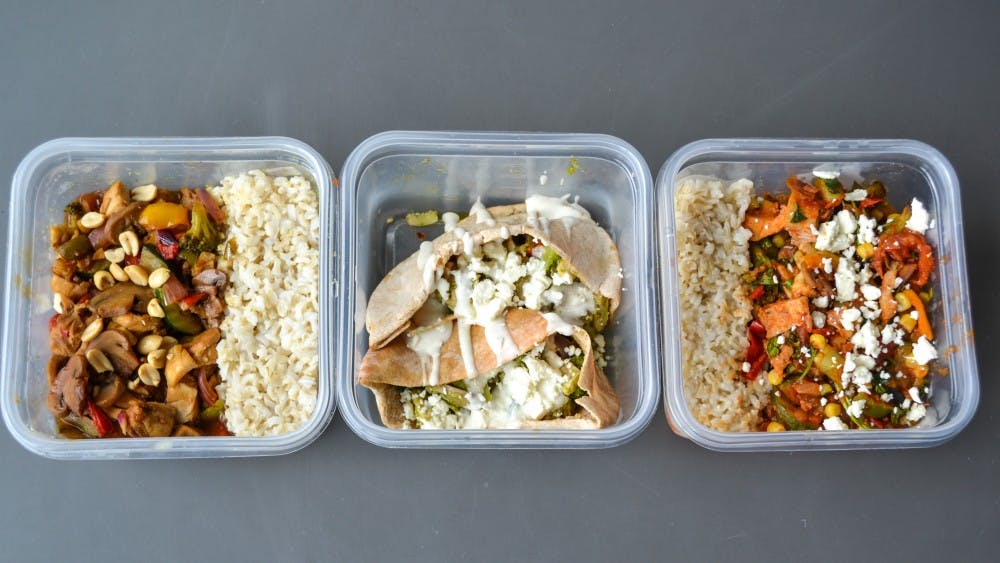
One bad experience didn’t discourage me from trying again, though, and in the seven years that went by, I like to think that I actually learned a couple of things: 1) remember to sharpen your knives, 2) use all of your senses when choosing ingredients (“How do you tell what good bread is without tasting? Not the smell, not the look, but the sound of the crust”), and 3) take your time. That’s why I laughed when I first saw meal–prepping listed as an item on a list of life hacks. The greatest number of different dishes that I had ever attempted to cook in one sitting was four—it took a little over six hours. Cooking lunch and prepping snacks for six days sounded like it would take up the entirety of the seventh. Sure, you might save time during the week by roasting four pounds of vegetables instead of two—but where’s the variety? And, most importantly, why would I even bother when there are 61 food trucks on Penn’s campus?
The answer came in the form of a realization: by that point, I had managed to get a good grasp on soufflés and even the intimidating Béarnaise sauce. But—and this was almost embarrassing—chicken was still the main character in my worst culinary nightmares. In an attempt to resolve our disputes once and for all, I decided to kill two birds with one stone and make an effort to also overcome my skepticism of the life hack. So, one rainy Sunday afternoon, armed with two full Fro–Gro bags and an unopened bag of brown rice I discovered in my cupboard, I went into battle. I was fighting my worst culinary fears and biases.
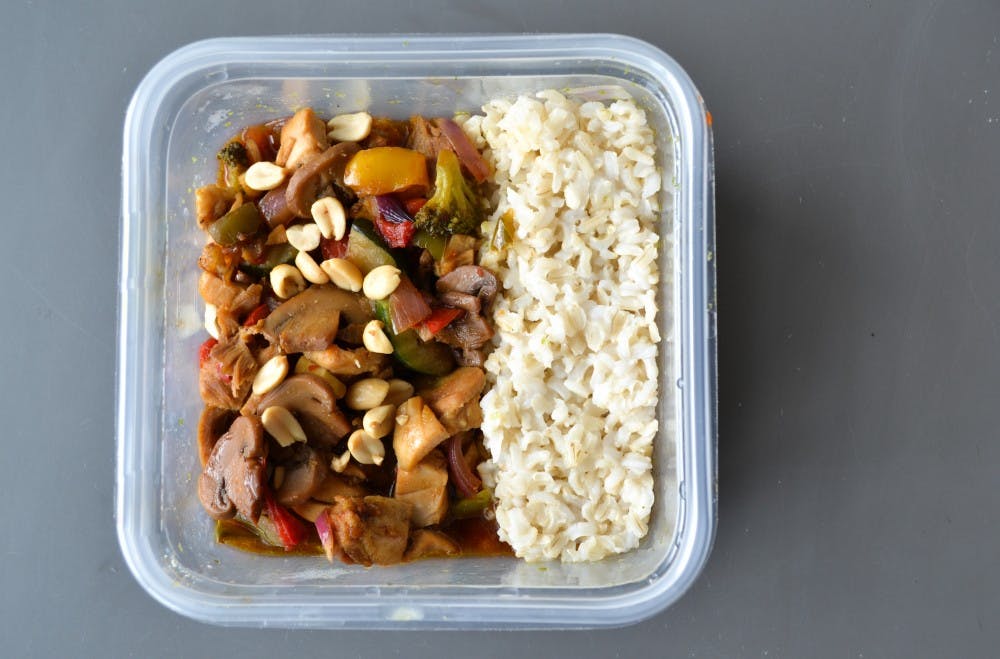
My goal was to conquer chicken by using ingredients and techniques I already knew weren’t too pretentious or time–consuming. The strategy involved cooking six different dishes—lunch for Monday to Saturday—using the same meat and side: baked chicken breast and roasted veggies. That wasn’t hard, but I was afraid I would get bored after the second day, so I needed powerful weapons to overcome my fear of monotony: sauces for diversity, toppings for convenience, and Greek yogurt for dessert, because why not?
I armed myself with tips and tricks I found online before brainstorming recipes. The key, I found, was to use the most innocuous seasonings for the chicken and veggies, making it possible to later adapt them to three different dishes inspired by Mediterranean, Asian, and Mexican cuisines. I combined olive oil with salt, pepper, and garlic, and then tossed in six boneless chicken thighs into half the mixture, keeping the rest for a mix of vegetables. If you attempt this at home, note that the veggies can be whatever you want them to be—I couldn’t decide between bell peppers, zucchini, and broccoli, so I just used them all. I put both the chicken and the veggies in a large tray. Then, the moment I was most afraid of came: it was time to cook the chicken. To make matters worse, I realized I forgot to preheat the oven, and 65° was nowhere near the temperature that I was aiming for.
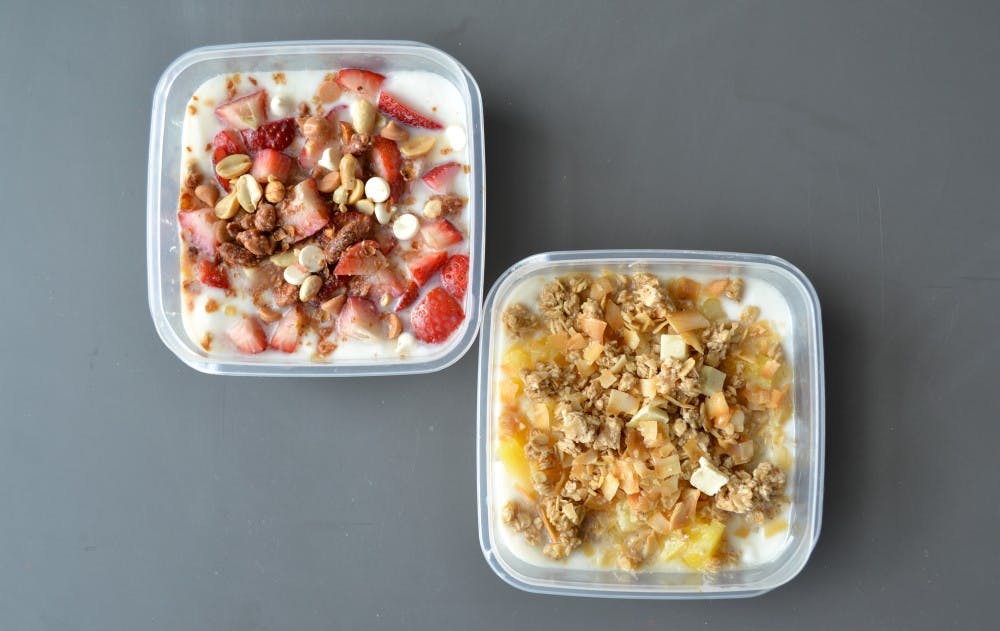
While waiting for the oven to reach 425°, I browned some onions, then added some corn and salsa to the pan. I seasoned the sauce with cumin and chili, and let it cool. My second sauce had a teriyaki base, with ginger, red pepper flakes, and cornstarch mixed together and then cooked on medium heat until bubbly. For the Mediterranean dish, I used plain basil pesto—unfortunately, store–bought, since there’s no way you could ever make it yourself in a high–rise kitchen.
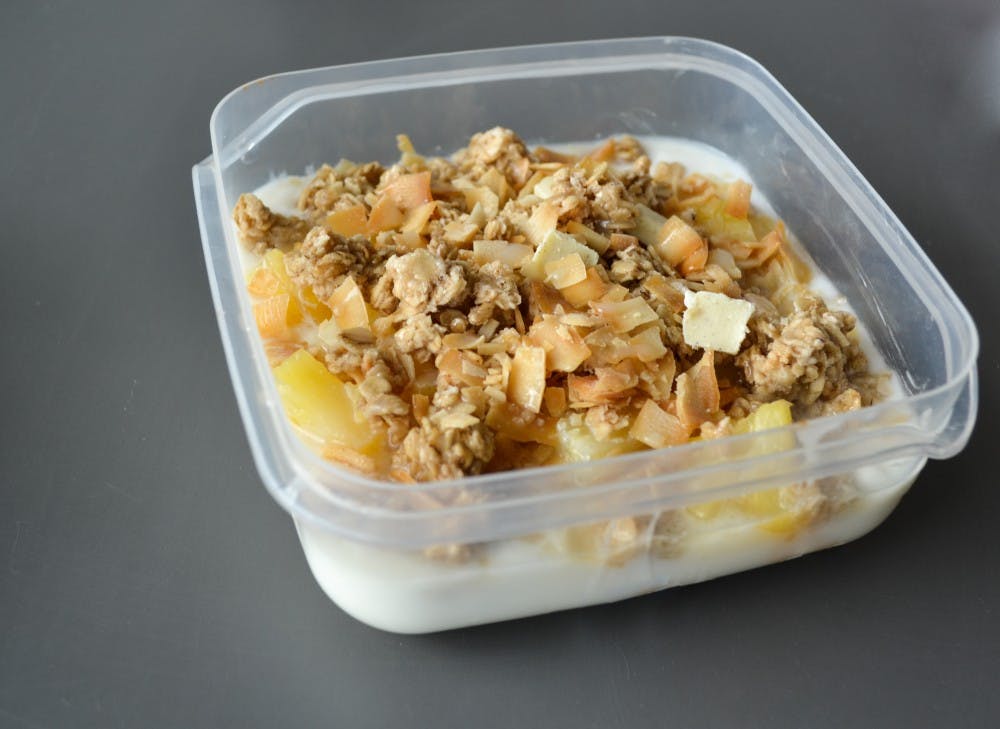
The meat and the veggies had to be roasted for 20 minutes, which gave me enough time to cook some brown rice. Before assembling my Tupperware, though, I had to cut the chicken into chunks, split them into three parts, and toss them and the vegetables into the sauces. Once that was done, I put some rice in four containers, added the teriyaki chicken to two of them and the salsa and corn mix into the others. I sprinkled a handful of crushed roasted peanuts on the first, and feta on the second. Voilà! In terms of lunch, four days were already covered. I took the pesto and coated the remaining chicken and vegetables, after which I filled four pita pockets with the mix. Unsurprisingly, I spent more time deciding what to add to this final dish than I did actually cooking—it was ultimately between mozzarella and parmesan, or feta and tzatziki. Though I went for the latter, I thought the taste of garlic was a bit overpowering. At the end of the day, however, I managed to accomplish what I had set set out to do: the chicken was cooked perfectly.
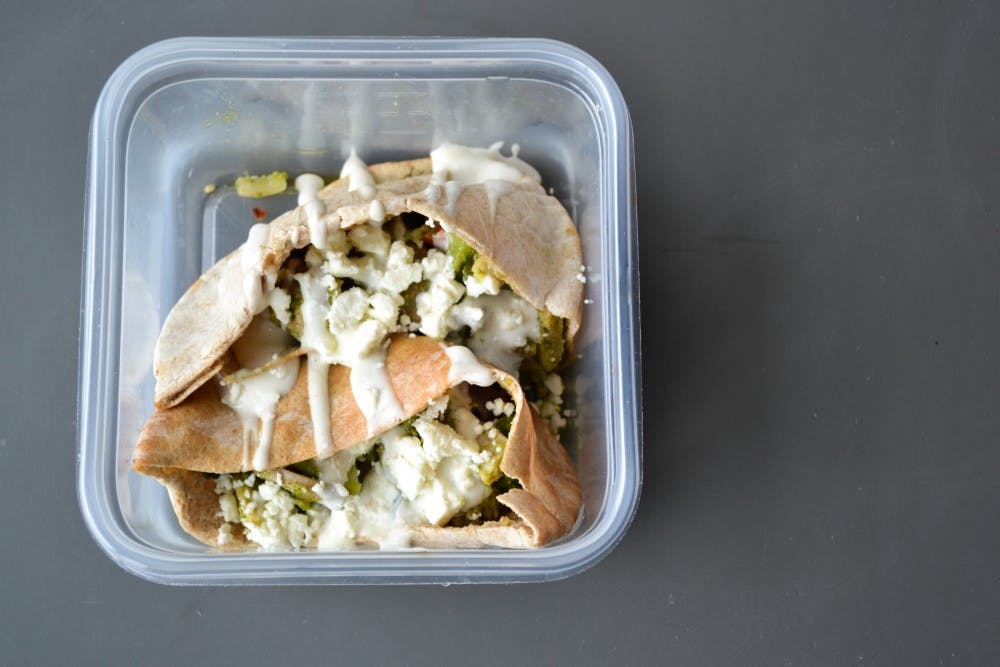
The entire affair, to my surprise, took a little over an hour. The preparation of yogurt cups usually occurred in the morning, the day when I was going to eat them: not only does no one like soggy granola, but fruit turns mushy when placed in plastic containers overnight. I liked experimenting with toppings: the two combinations I enjoyed most were strawberries, chocolate flakes, and caramelized almonds, and a more tropical assortment of pineapple, toasted coconut flakes, and white chocolate. The fun part about Greek yogurt, though, is that you can add whatever you want to it: from bananas, honey, and cinnamon to dark chocolate and oranges, the possibilities are limitless.

At the close of the week, I was happy to call the operation a success. The dishes were a lot lighter than what you would get at most food trucks, and the fact that I had cooked them myself made me feel empowered. I wish I could say I’m going to do it again—surprisingly enough, it’s easy to eat good, healthy food without devoting too much time to cooking. But I still think that meal–prepping couldn’t ever be a life–hack: in the long–run, the time I’d spend thinking of new recipes and looking for ingredients would add up, and I would return to a Pret–based diet before I got bored. Compared to Penn’s dining options, though, meal–prepping is undeniably the healthiest choice. And even if you’ve just started cooking, it’s guaranteed to be a lot better than Commons, at least.
TL;DR: Meal–prepping is not as intimidating as it sounds.
Price: $30–$40 per week or $5–$7 per day, depending on where you buy the ingredients
